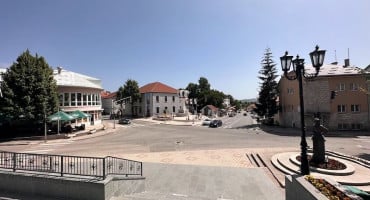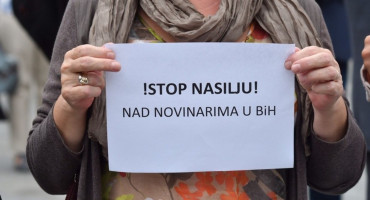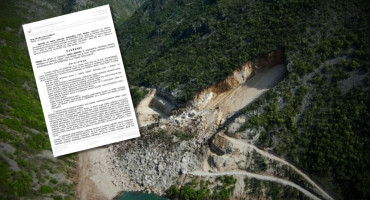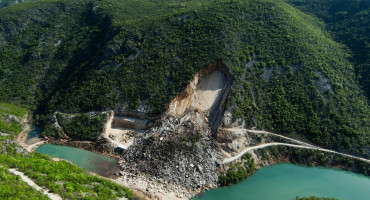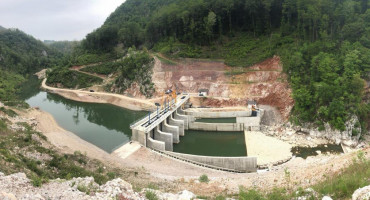PHANTOM TPP GACKO 2 Where did the project with Chinese investors worth one billion KM disappear to?
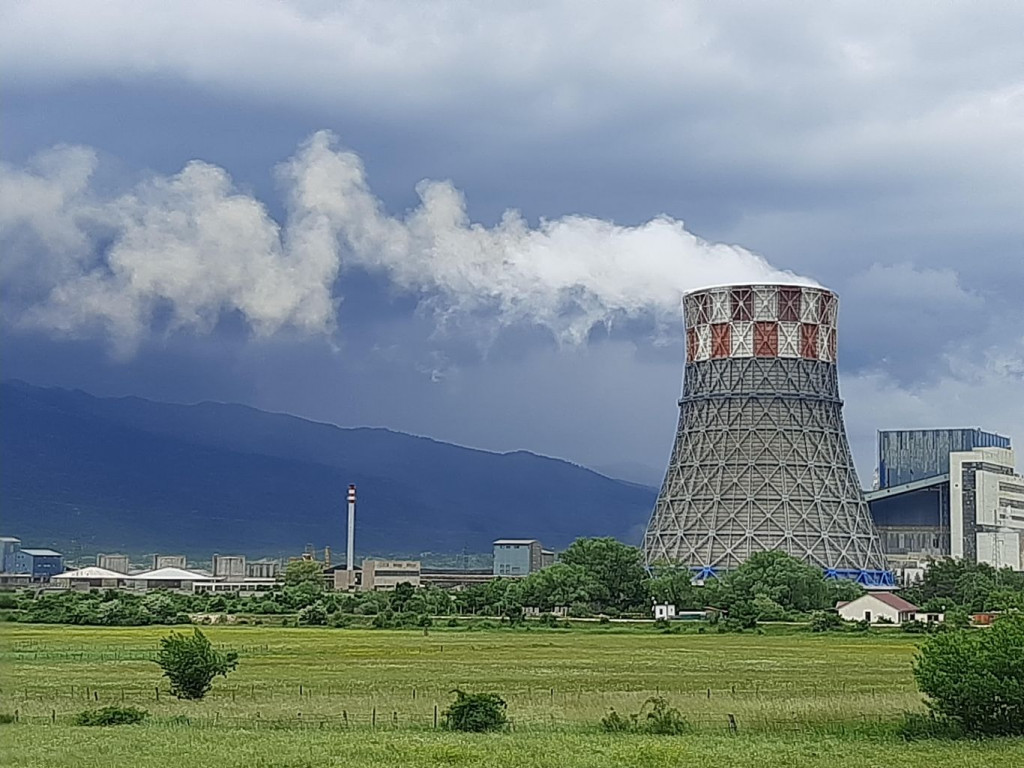
Last Saturday, sometime in the afternoon, the centre of Gacko was empty. From the Thermal Power Plant, dust was billowing, forcing people to stay indoors. Only a few passersby respond to our question about the construction of the Gacko 2 Thermal Power Plant with a counter-question: “Is this a hidden camera?” We explain that we are working on an investigative story that the authorities of Republika Srpska announced over 5 and a half years ago, which involves the construction of a new power plant with Chinese partners. All our interviewees direct us to a store selling Chinese goods and say that they are the only Chinese people who have set foot in this polluted town.
They had heard about the story regarding the Chinese investors, but they never believed in its credibility. The man in the photograph tells us that rumours about the construction of the Gacko 2 Thermal Power Plant always surface before elections and then get debunked by the ash and dust that pose an increasing danger to people’s health. The woman in the photograph says that the town will remain eerie as families with children continue to leave.
As a reminder, in July 2018, the then-president of Republika Srpska, Milorad Dodik, and the then-minister of Industry, Energy, and Mining, Petar Đokić, along with representatives from the Chinese “Poly Group,” agreed to establish a joint venture for the construction of a new power plant in Gacko to replace the existing one. The planned ownership share was set at 51% for the Chinese partners and 49% for Republika Srpska, and the RS Government was expected to make a decision on the formation of the joint venture within the next 15 days. Additionally, all the necessary conditions related to financing, design, and construction of the power plant were to be prepared. Prior to that, on December 12, 2017, a ceremonial signing of the General Agreement for the construction project of the Gacko 2 Thermal Power Plant took place in Banja Luka, involving representatives from China Machinery Engineering Corporation and the Emerging Markets Power Fund.
The agreement was signed on behalf of the Government of Republika Srpska by Minister of Industry, Energy, and Mining, Petar Đokić, on behalf of Elektroprivreda Republike Srpske (Electric Power Utility of Republika Srpska) by the company’s director, Željko Kovačević. Representing China Machinery Engineering Corporation was the corporation’s vice president, Tong Zigang, and on behalf of the Emerging Markets Power Fund, Mu Yushi.
The signing ceremony was also attended by the then-president of Republika Srpska, Milorad Dodik, and the prime minister of Republika Srpska, Željka Cvijanović.
This project aims to construct a new thermal power plant in the municipality of Gacko, with an installed capacity of 350 megawatts and an estimated value of over one billion KM. Đokić announced that in the coming period, the agreement for the establishment of the joint venture would be finalized and signed, and intensive activities for the implementation of this project would commence. The construction of the “Gacko 2” thermal power plant was presented as one of the most important projects for the development of the energy sector in Republika Srpska.
At that time, it was stated that all activities were progressing according to the planned schedule, and representatives of Chinese investors and engineers were present in Gacko, assessing all aspects of the project. It was emphasized that as soon as the joint venture is registered, with permits and approvals in place, construction can commence. The construction was expected to last for 50 months, with announcements that the new power plant could potentially be completed 10 months ahead of schedule. One unanswered question was how and by whom the loans taken for the project would be repaid. Additionally, there were concerns about the rationale behind investing in a new loss-making entity that generates electricity from coal.
As it is known, Chinese investors are among the few who continue to finance coal-based electricity production. Most international financial organizations no longer support this method of production.
For Inforadar, the citizens of Gacko view this as a fairy tale. The reality, however, is that the only interests in such construction lie with the authorities of Republika Srpska. Such enterprises provide secure employment for party members on the one hand, and on the other hand, this type of construction guarantees profits for the financiers. During a pre-election party rally of the Socialist Party in Gacko, the party’s president, Petar Đokić, stated that one of the first projects in Gacko would be the reconstruction of the existing thermal power plant, extending its operational lifespan until 2040. He also mentioned plans for the construction of a new power plant.
At the same time, experts and environmentalists have opposed such construction primarily due to concerns regarding human and animal health, as well as environmental impacts. Furthermore, almost all European countries have been closing down thermal power plants. By the end of 2018, Bosnia and Herzegovina was expected to fulfil the requirements as a member of the Energy Community regarding emissions reduction. According to the international agreement of the Energy Community, the Gacko thermal power plant was supposed to reduce its SO2 emissions by 80%, from the current 15,000 tons to 2,500 tons, and particulate matter emissions by 90%. International experts have suggested working on the reconstruction of the existing power plant rather than considering the construction of Gacko 2.
Milanka Babić Kovačević, a journalist and human rights activist, highlights for Inforadar:
“From this perspective, now that years have passed, we can conclude that our officials and everyone involved in the Gacko 2 project were either incapable of realizing the project or intentionally misleading us. In reality, there has been little progress beyond the signing of the agreement and a few trips by our representatives to China, which we paid for. In Gacko, there were no high expectations for this project from the beginning, knowing the people who were leading it. On the other hand, considering that the project with ČEZ (Czech Power Company) failed, which was far more serious, scepticism is entirely understandable. In short, I don’t know how it appeared from Banja Luka, but I know that in Gacko, no one believed in the successful outcome of this endeavour.”
Prior to the story of the investment and the arrival of the Chinese, ČEZ (Czech Power Company) sued ERS (Electric Power Industry of Republika Srpska) and RiTPP Gacko, seeking millions in damages for lost profits and investment in the project. According to the ruling of the Arbitration Tribunal, Elektroprivreda RS is required to pay ČEZ 15 million BAM. Despite the failed project for which taxpayers from Republika Srpska are paying the compensation, the RS government has restarted the “Gacko 2” project. The coal-fired power plant in Gacko was commissioned 30 years ago. The company was privatized in 2005 and registered as Rudnik i Termoelektrana Gacko (RiTPP).
Since 2006, RiTPP Gacko has operated as a joint-stock company within the framework of Elektroprivreda Republike Srpske. The RS government retained a controlling stake of 65%, while the remaining shares were taken by small shareholders. Interestingly, the then-new Prime Minister of Republika Srpska, Radovan Višković, was unaware of the signing of the contract with the Chinese even two years after its signing, despite it being touted as the “most important post-war investment.”
In 2019, Radovan Višković stated, “I don’t want to be a prophet, but negotiations are underway. No agreement has been signed yet. When we have a concrete agreement, you will be informed.”
In November 2020, the Prime Minister stated that the “Gacko 2 power plant story” was stalled solely due to the COVID-19 virus. However, it seems that the Prime Minister forgot that public investment programs are publicly accessible. It is worth noting that there has been no progress or actual work on this project to date.
From Elektroprivreda RS, this topic, as stated by the secretary of the general director Luka Petrović, can only be commented on by the director himself, and according to her, he is currently travelling.
However, on the website of Elektroprivreda RS, it is stated that “based on confirmed lignite reserves, further construction of thermal power units in Gacko is planned. This primarily refers to R and TPP Gacko II, which would complete the energy potential of the Gacko basin as a producer of thermal energy with a capacity of 2 x 300 MW. Extensive exploratory work has been carried out in relation to the planned construction of TPP Gacko II, and a comprehensive study on the selection of the location for the second phase of the Gacko mine, as well as the Technical Project for TPP Gacko II, have been conducted and revised,” as stated on the ERS website.
The story about the Chinese involvement continued to be fueled until March of this year when the Institute for Energy Economics and Financial Analysis (IEEFA) presented its new analysis. Arjun Flora, the President of this reputable organization for Europe, stated: “Investors, builders, and taxpayers should refrain from supporting this project doomed to fail. The new IEEFA analysis shows that the development of solar and wind power plants in the region would offer a more secure and cleaner energy option. Gacko 2 faces poor economic viability. The power plant would struggle to recoup its investments throughout its existence, according to all analyzed scenarios, including generous assumptions favouring coal production. It is difficult to predict who would finance this project in Bosnia and Herzegovina under current conditions, and China and Russia are likely to be excluded from the list of potential investors. Even if the factory were to secure funding, the timing is unfavourable,” as stated by IEEFA.
President of Acousmatica and co-author of the study, Paolo Coghe, also emphasizes that there is no justification for TPP Gacko 2: “Why continue with the construction of an expensive and high-risk project based on fossil fuels when investors can aim for a safer return on investment by choosing onshore wind farms and solar photovoltaic systems,” believes Coghe.
In simple terms, the economic prospects of the planned Gacko 2 thermal power plant are catastrophic, even under the most favourable assumptions, and a similar scenario applies to other coal projects in the region.
It appears that despite contacting the Ministry of Energy of RS and Minister Đokić directly, there has been no response to inquiries regarding the status of the Chinese project. However, it is quite certain that even with the discovery of investments and the potential start of TPP Gacko 2’s operations, the plant would face significant losses within 5 years, as estimated by experts. This is mainly due to the predicted downward trend in electricity prices. The project would incur high costs during construction due to constant inflation of raw materials and supply chain bottlenecks following the pandemic, geopolitical issues, and the end of more aggressive central bank policies. All these factors contribute to the unfavourable economic prospects for the proposed thermal power plant in Gacko.
Gacko 2 would already face significant costs of carbon dioxide emissions taxes from the outset, due to changes in emissions taxation policies.
On the Gacko field, coal reserves are estimated at 200 million tons. One of the priorities in the “ERS” Development Plan for the period 2019-2029 is the construction of facilities for electricity production from renewable sources, but possibilities within the final decision-making process for electricity production from thermal power plants are also defined. This means that there is still no abandonment of the partners from China, with whom everything is concluded behind closed doors. It should be noted that the management of TPP Gacko is also perpetually in meetings, also behind closed doors to the public.

